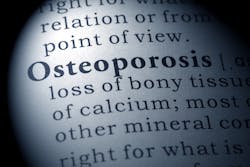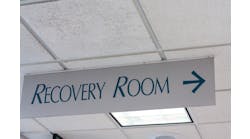The nonprofit National Committee for Quality Assurance (NCQA) has developed five recommendations for improving osteoporosis screening and management.
The white paper titled, “Improving Osteoporosis Care,” summarizes findings from a roundtable meeting convened by NCQA and funded by Amgen in January 2022 in which clinicians, osteoporosis researchers, and health plan leaders discussed how to improve osteoporosis care.
Osteoporosis is characterized by weakening of bone tissue and bone structure. It is the most common metabolic bone disease, affecting about 27 percent of women 65 years of age and older and about 6 percent of men 65 and older in the U.S., and its prevalence is expected to increase as the population ages. Screening and treatments for osteoporosis are often underused because of barriers such as: lack of access to screening, confusion about reimbursement policies, fragmented care, and lack of data on racial and ethnic differences in osteoporosis risk and treatment responses, the white paper noted.
“Even though osteoporosis is the most common metabolic bone disease, many Americans don’t know they have it until they break a bone. That is simply too late. With a rapidly aging population, U.S. health care must do better to support older Americans,” said NCQA President Margaret E. O’Kane, in a statement. “With this white paper, NCQA is proud to share actionable recommendations for improving systems and policies, as well as screening and interventions, which can help reduce care gaps and improve the quality of osteoporosis care.”
To improve osteoporosis prevention, diagnosis, and treatment, NCQA sought input from osteoporosis researchers, clinicians who care for patients with osteoporosis, and health plan leaders who direct osteoporosis performance measurement and quality improvement. Their perspectives during the roundtable meeting served as the foundation for a white paper about barriers and ideal care of people with osteoporosis. The solutions the white paper outlines include:
- Access to Screening and Treatment: Increasing access to DXA scans through grants and leveraging telemedicine for practices in rural communities.
- Provider Support: Educating providers about osteoporosis-related topics such as: racial and ethnic differences in osteoporosis risk and treatment response, overcoming ageism biases in osteoporosis treatment guidelines, and how to obtain preauthorization for osteoporosis treatments.
- Shared Decision-Making: Providing regular patient visits to establish relationships, assess treatment tolerance and adherence, and change medications when needed.
- Multidisciplinary Team-Based Care: Implementing systems for osteoporosis management after a fracture, which include multidisciplinary teams of pharmacists, geriatricians, geriatric pharmacotherapists, and others.
- Incentives: Using performance and quality measures linked to reimbursement to ensure accountability in quality care.


